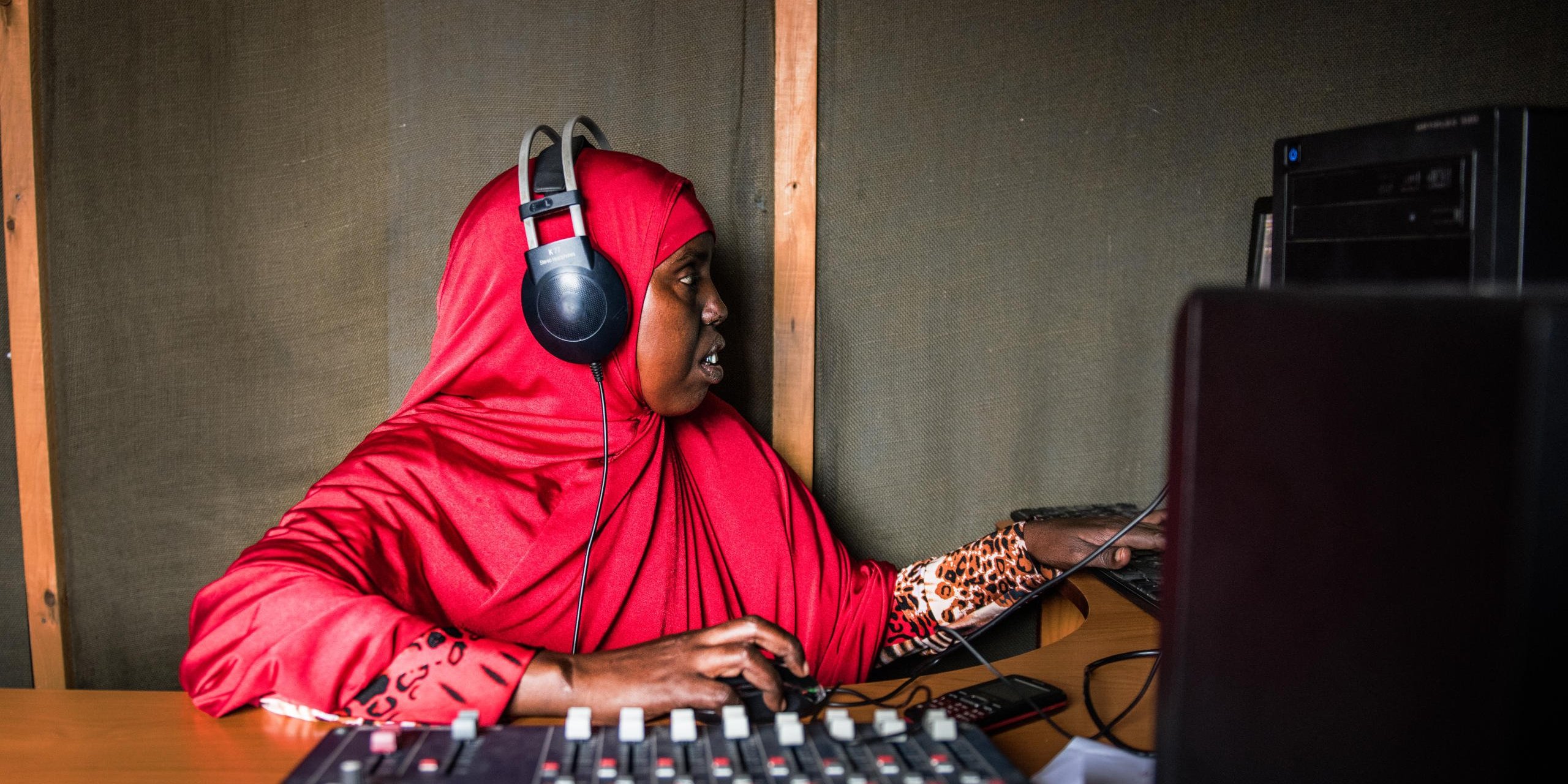
Mano (27) sits in front of a microphone inside a small container that has been converted into a radio station. She is focused on practicing lines for the midday show that’s about to start.
"I’m a Somali journalist"
"I’m a Somali journalist," she says proudly. Mano is also a refugee. One of about 290,000 people living in Kenya’s Dadaab refugee camp, the largest camp of its kind anywhere in the world.
Mano is enrolled in NRC’s journalist training school in Dadaab, where she is studying as a field reporter and radio presenter.
"I like reporting on issues that affect women. Radio Gargar is the only station in the camp covering humanitarian issues," she says. But covering women’s issues isn’t something Mano was able to do back in Mogadishu.
Escaped Al Shabaab
"One day I was reporting on a Government bombardment in a town that killed some Al Shabaab fighters. That evening Shabaab called me and offered me money to stop reporting. I told them I’m a journalist and work for the people. The next day I reported the news again. That night they came to my home. I escaped to my aunt’s. The following day I fled to Kenya with my three children."
That was four years ago. Now Mano lives with her five children in Dadaab refugee camp. The youngest two were born in the camp and have never been to Somalia.
Not safe for journalists
"One day I would like to return to Somalia," says Mano. "But for now it’s not safe for journalists, so I cannot go home," she says.
Radio Gargar was set up in 2013 as part of NRC’s youth education programme, and is funded by the US government and the UN Refugee Agency (UNHCR). It is a one-year informal education programme designed to support young people like Mano who are affected by conflict, who have a lack of opportunity or missed out on school. Through the programme, youths acquire skills like journalism to improve their chances of finding a job.


